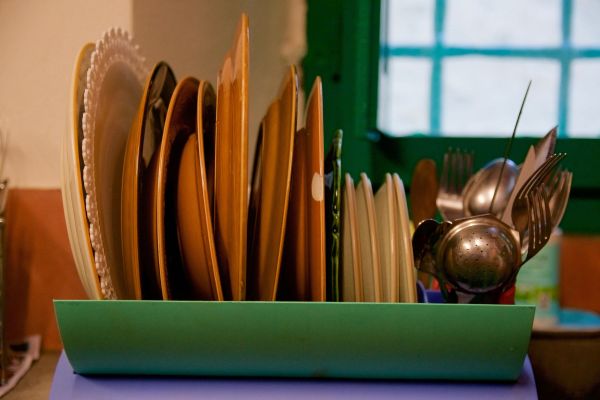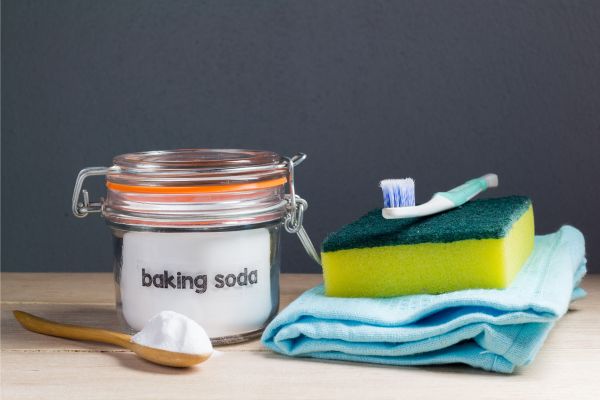Bamboo utensils are a popular choice in many kitchens due to their durability, eco-friendliness, and aesthetic appeal. However, to ensure these pot remain in top condition and continue to serve you well, proper care and maintenance are essential. Knowing how to wash bamboo utensils effectively helps preserve their natural beauty and extends their lifespan. In this guide, we’ll explore the best practices for cleaning rattan utensils, from gentle hand washing to avoiding common pitfalls that can damage them. Whether you’re a seasoned chef or a casual cook, these tips will help you keep your bamboo pot looking and performing their best.
Hand Wash with Warm Water

When hand Wash Bamboo Utensils, begin by identifying each item to ensure proper cleaning. Start with a gentle, warm water rinse, avoiding hot water that can warp the bamboo. Use a mild dish soap to create a soapy solution. Apply this solution to a soft sponge or cloth, and carefully scrub the pot, focusing on any areas with food residue. Make sure to clean each utensil individually, including spatulas, spoons, and tongs, to maintain their quality and prevent cross-contamination. Rinse thoroughly with warm water to remove all soap. Dry each utensil immediately with a clean towel to prevent moisture from seeping into the rattan, which can lead to warping or cracking. Proper identification and careful washing of bamboo utensils will help prolong their lifespan and keep them in excellent condition.
Use a Soft Sponge or Cloth

When wash bamboo utensils, it’s essential to use a soft sponge or cloth to protect their delicate surface. Abrasive materials like steel wool or harsh scrubbers can scratch and damage the bamboo, compromising its longevity and appearance. A soft sponge or cloth ensures a gentle, thorough clean without causing any harm. Start by identifying the specific pot you’re cleaning, such as spoons, spatulas, or tongs, to address any unique areas of concern. For instance, spatulas with angled edges might require more careful attention to ensure all food residues are removed without causing scratches. By using the right cleaning tools and techniques, you can maintain the functionality and aesthetic appeal of your bamboo utensils for years to come.
Avoid Prolonged Soaking
Avoiding prolonged soaking is crucial for maintaining the integrity of your wash bamboo utensils. Rattan is a natural material that can absorb moisture if left submerged for extended periods, leading to potential warping, cracking, or weakening of the fibers. When washing rattan utensils, always ensure that they are briefly immersed in warm, soapy water and cleaned promptly. Identify your pot, such as spatulas, spoons, or salad tongs, and wash each one individually to prevent them from staying in water longer than necessary. After rinsing, promptly dry the utensils with a clean towel to remove any remaining moisture. By following these steps, you’ll help preserve the strength and longevity of your bamboo kitchen tools.
Dry Immediately After Washing

After wash bamboo utensils, it is crucial to dry them immediately to maintain their longevity and appearance. The process begins with identifying the specific pot you have cleaned—whether they are spatulas, spoons, or cutting boards. Once identified, promptly use a clean, dry towel to thoroughly wipe down each item. This quick action prevents water from lingering in the bamboo’s porous surface, which could otherwise lead to warping, cracking, or mold growth. Ensuring that each utensil is completely dry before storing it also helps preserve its natural finish and structural integrity. By following this simple yet effective step, you can extend the life of your rattan utensils and keep them in optimal condition.
Use Baking Soda for Stains

Baking soda is an excellent natural solution for removing stubborn stains from bamboo utensils, such as spoons, spatulas, and cutting boards. To tackle tough stains, create a paste by mixing baking soda with a small amount of water until it reaches a thick consistency. Apply this paste directly to the stained areas of the rattan utensils and gently scrub with a soft sponge or brush. The mild abrasiveness of the baking soda helps lift the stains without damaging the bamboo surface. After scrubbing, rinse the pot thoroughly with warm water and dry them immediately with a clean towel to prevent moisture absorption. Regular use of this method can help maintain the appearance and hygiene of your rattan kitchen tools.
Avoid Using the Dishwasher

When it comes to cleaning utensils, avoiding the dishwasher is essential for preserving their longevity and quality. While dishwashers offer convenience, the high heat and powerful water jets can damage delicate materials like wood, bamboo, and even certain metals. Over time, repeated exposure to intense heat and harsh detergents can cause utensils to warp, crack, or lose their finish. Instead, opt for hand washing your utensils using warm water and a mild dish soap. Gently scrub each item with a soft sponge to remove food residues, and always dry them immediately to prevent moisture damage. This simple routine not only keeps your utensils looking their best but also ensures they remain safe and functional for years to come.
Disinfect with Vinegar

To effectively disinfect bamboo utensils, such as cutting boards, spatulas, and salad servers, using vinegar is a natural and efficient method. Begin by mixing equal parts of white vinegar and water in a spray bottle. Spray the solution generously onto the surfaces of the rattan utensils, ensuring that all areas are covered. Let the vinegar solution sit for a few minutes to allow its natural antibacterial properties to work. Afterward, wipe the pot thoroughly with a clean, damp cloth to remove any residue. Rinse the pot with water and dry them immediately with a towel. This process not only helps in sanitizing the rattan but also prevents unwanted odors and maintains the utensils’ longevity. Regular disinfection with vinegar can keep your bamboo kitchen tools hygienic and in good condition.
Apply Mineral Oil Regularly

To keep your bamboo utensils in top condition, it’s essential to apply mineral oil regularly. This includes cutting boards, spatulas, spoons, and other rattan kitchen tools. Mineral oil helps maintain the bamboo’s natural moisture, preventing it from drying out, cracking, or splitting over time. To apply, first ensure that the pot are clean and completely dry. Then, use a soft cloth or paper towel to rub a generous amount of food-grade mineral oil onto the surface of each utensil. Allow the oil to soak in for a few hours or overnight before wiping off any excess. Regular application, about once a month or as needed, will preserve the beauty and longevity of your rattan utensils, ensuring they remain functional and aesthetically pleasing.
Avoid High Heat Exposure
Bamboo utensils, such as spatulas, spoons, and tongs, are prized for their durability and natural aesthetic. However, exposing them to high heat can compromise their longevity. Direct heat sources, like stove burners or hot pans, can cause rattan to dry out and become brittle. This excessive heat exposure can lead to warping, cracking, or even splitting of the bamboo, ultimately shortening the lifespan of your pot. To preserve their quality and ensure they remain functional, keep rattan utensils away from high-temperature environments. Store them in a cool, dry place and avoid placing them near heat sources during cooking to maintain their integrity and extend their usability.
Store in a Dry Place

To ensure the longevity and optimal condition of your bamboo utensils, it’s essential to store them in a dry place. Bamboo kitchen tools, such as spoons, spatulas, and tongs, are particularly sensitive to moisture. When stored in a humid environment, these pot can absorb excess moisture, which may lead to warping, cracking, or even mold growth. After washing and thoroughly drying the pot, place them in a well-ventilated area away from sources of humidity. Avoid storing them in closed, damp cabinets or near sinks. Instead, opt for a dry, open space where air can circulate freely, helping to maintain the integrity and appearance of your bamboo utensils for years to come.
Is bamboo cutlery washable?
Yes, bamboo cutlery is washable. For best results, hand wash bamboo cutlery with warm water and mild dish soap. Avoid soaking and use a soft sponge to prevent damage. Dry immediately to prevent warping and cracking. Do not place bamboo cutlery in the dishwasher or expose it to high heat, as these can weaken the bamboo. Regular maintenance helps prolong its life.
How to wash bamboo dishes?
To wash bamboo dishes, use warm water with mild dish soap and a soft sponge. Avoid soaking or using abrasive materials, as this can damage the bamboo. Rinse thoroughly and dry immediately with a clean towel to prevent moisture absorption and warping. For stubborn stains, use a baking soda paste, and occasionally apply food-grade mineral oil to keep the bamboo in good condition.
Conclusion
Maintaining bamboo utensils involves more than just washing; it requires proper handling, cleaning, and storage techniques. By following these steps, your bamboo utensils will remain functional and beautiful for many years. Regular maintenance not only preserves their utility but also their aesthetic appeal, making your sustainable choice a lasting one. As you integrate these practices, you’ll find that maintaining rattan utensils is both simple and rewarding, ensuring they remain a staple in your eco-friendly kitchen.

